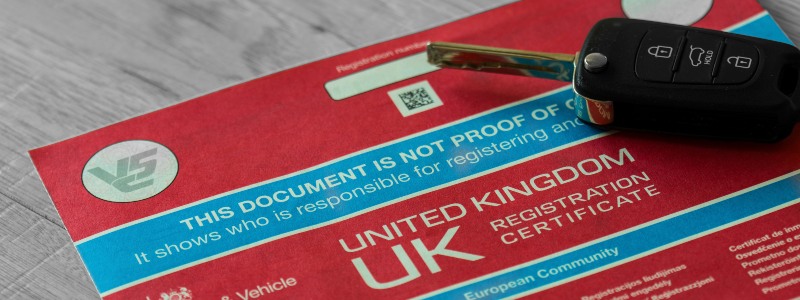
What’s changed on the new V5C?
9th Apr, 2020
In case you’re wondering, your V5C is your vehicle logbook, and its job is basically to identify the owner of a vehicle for the DVLA. After a redesign in 2016, new V5Cs began to be distributed in April 2019. These have now been in circulation for a full 12 months, which means if you’ve bought a car in the past year, or you’re planning on buying one soon, you might find that the document has changed a bit from its older iterations. So we’ll be summing up those changes for you really quickly, as having your V5C is also something you’re going to need when you come to scrap your car.
What is your V5C, or vehicle logbook?
Your V5C (sometimes known as a vehicle logbook) proves who is the vehicle’s registered keeper, and contains key specific details of a vehicle. You’ll need it to inform the DVLA of a change of ownership, or any change of the owner’s name or address. You’ll also need it to notify the DVLA if your vehicle has been modified in any way, or scrapped, or written off.
Amongst the key details it contains are:
- Your car registration
- The date the car was registered
- Its colour
- Its engine size
The changes to the V5C
As you’ll see, there have been quite a few changes in total. Most of them are designed to make things more straightforward and less confusing for drivers, as well as cut down on unnecessary admin for car owners and DVLA staff alike. Here are all of the major ones.
On the front cover:
- The reference number has been moved to the top of the document.
- The name and address has also been moved to the front cover.
- A new message has been added that says: “Don’t share, keep it safe.” Hopefully you’re doing that anyway, but the idea is to promote security awareness amongst drivers, cutting down on possible fraud.
- One of the most striking changes is a multi-coloured guidance section at the bottom of the front page, helping drivers to quickly spot the section they’re looking for.
- A prominent enforcements message has been added to the front page, keeping vehicle licensing compliance at the forefront of drivers’ minds.
- The date of acquisition has been moved to just below the document reference number
The changes inside:
- The vehicle details have had a reshuffle to allow room for extra fields, so drivers can provide any extra information that might be required
- The change of keeper section and the change of name or address sections have been moved further apart, cutting down on possible confusion for drivers
- Drivers can now supply their contact details
- A new ‘country of export’ field has been added, for anyone who’s exporting their vehicle for more than 12 months
- Section 6 (the green slip) has had its name and address fields removed to prevent drivers from incorrectly returning it to the DVLA. It’s the sort of mistake that’s very easy to make, but unfortunately it can stop people from taxing their vehicle!
Further changes:
- Data capture boxes have been added
- The signature boxes have been removed, and replaced with red declarations
- A dual language format has been introduced, catering to both English and Welsh speakers
- The V5C has been serialised on the front cover and the back page, while the V5CW has been serialised across all 3 pages.
- A document reference number has been added to each section. (The aim behind this is partially to facilitate the gradual shift to online services.)
- Instructions have been simplified across the document.
- The perforations have also changed – now, the only perforated section is the green new keeper slip on the back.
If you’re scrapping your car, you’ll need to hand over your V5C but keep the yellow V5C/3 section as a notification of sale or transfer. You’ll then get a Certificate of Destruction a few weeks later, which is legal proof that you’re no longer responsible for the vehicle.
Now if you’ve lost your V5C, it’s obviously not the best news but happily it’s not the end of the world, as we can actually scrap your car without it. However, it’s always worth letting us know as soon as possible! And if you need to find out some vital information about your car in the meantime, you can visit www.gov.uk, and check the official DVLA portal, which should have all the information you need.